URANUS A unique ice giant

Why Is Uranus Sideways?
The tilt was first measured in 1851, and for decades the most popular explanation has been a collision at a glancing angle with another planet, like the impact that gave birth to Earth’s Moon. One problem with this hypothesis is that none of the other planets have large tilts, despite experiencing the same kinds of collisions. Another is that Uranus' rings and moons are also tilted at the same angle, and a single collision could not have knocked everything on its side. A different explanation has been proposed recently that better fits our observations. Even Uranus’ largest moons are small in comparison the other giant planets, but if it had a large moon in the past and its orbit started drifting, gravitational tugging on Uranus and its other moons and rings could have gradually tilted all of them together. At some point, the moon’s orbit could have become chaotic, ultimately crashing into Uranus and locking the system’s tilt in place. Read More
Latest News About Uranus
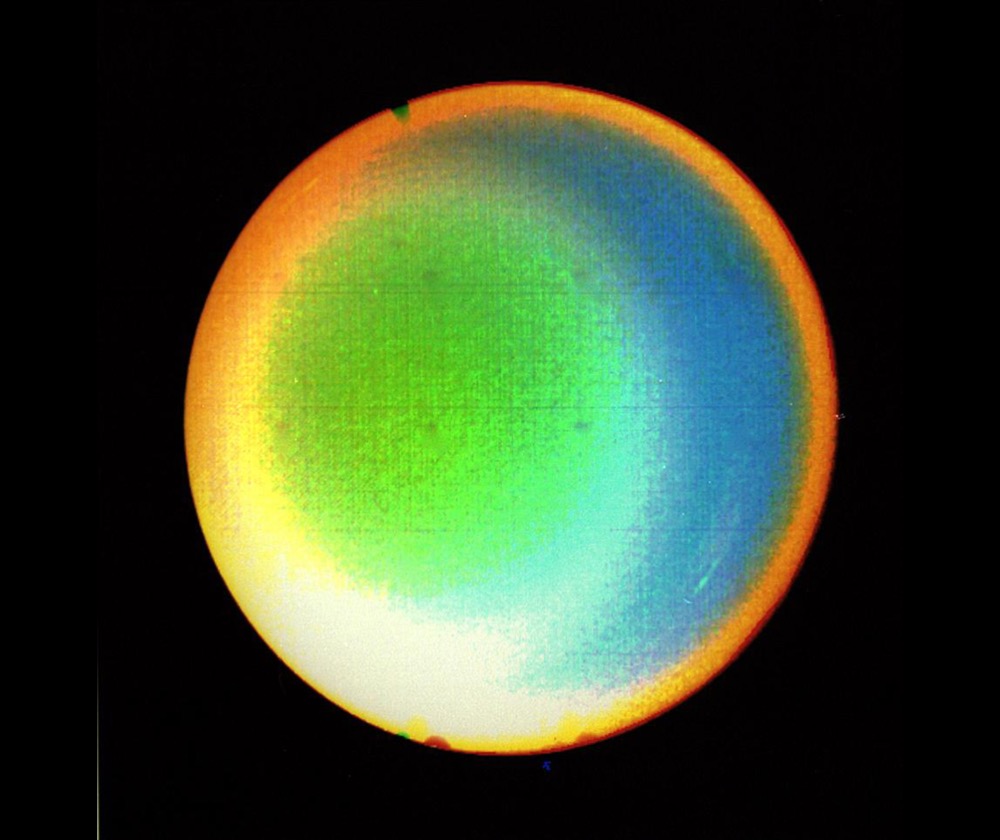
Uranus and Neptune aren't made of what we thought
April 11, 2024
A study suggests the ice giants Uranus and Neptune aren't quite as watery as previously thought Read more
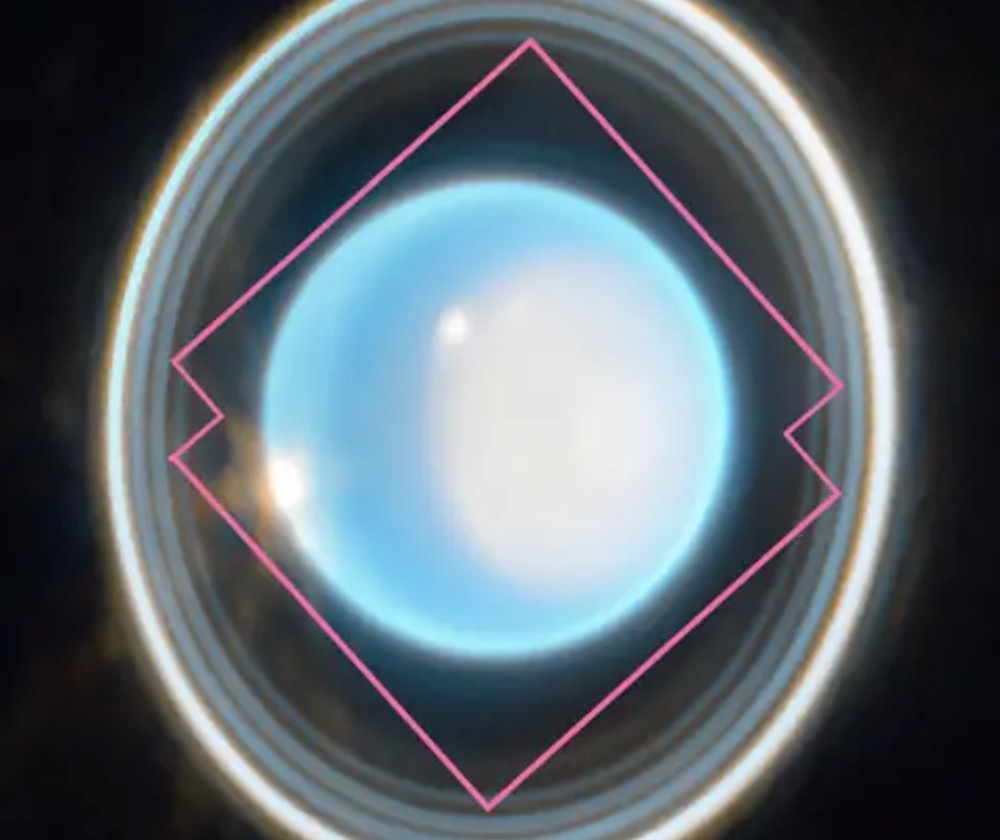
'Game-changing' study into Saturn's (and Uranus') northern lights
March 22, 2024
It could "fundamentally shape our understanding" of both planets Read more
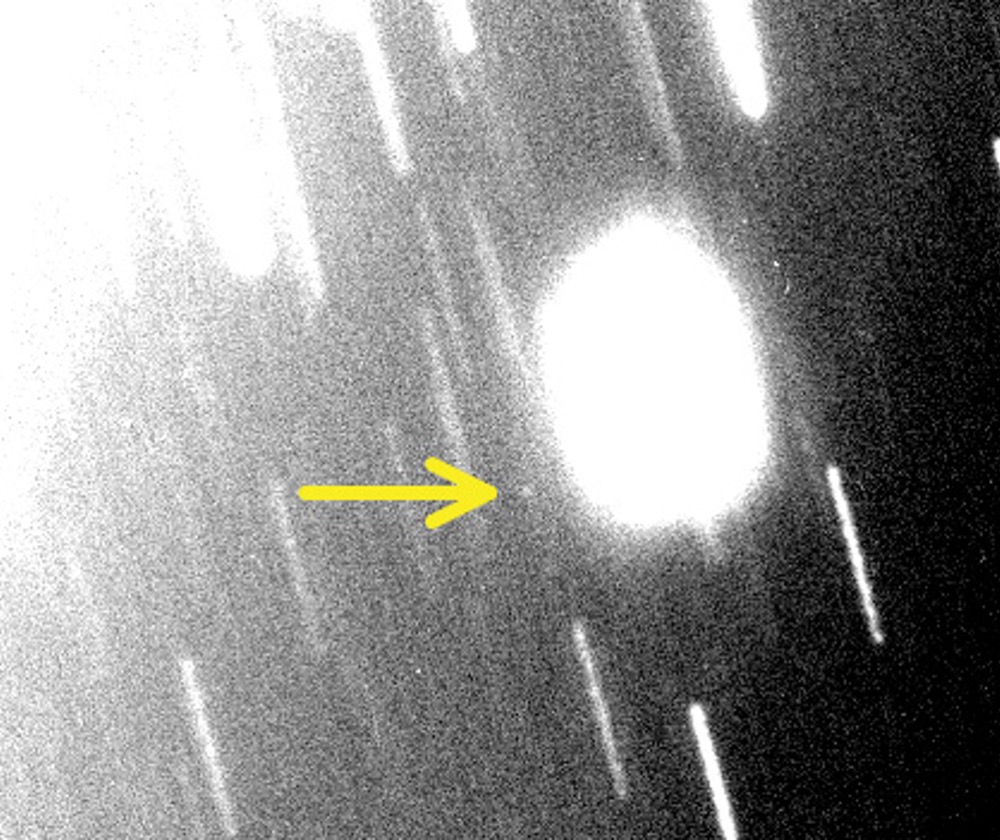
The three new moons for Uranus and Neptune are each part of a “family"
February 7, 2024
These groupings fragmented from a single parent object Read more
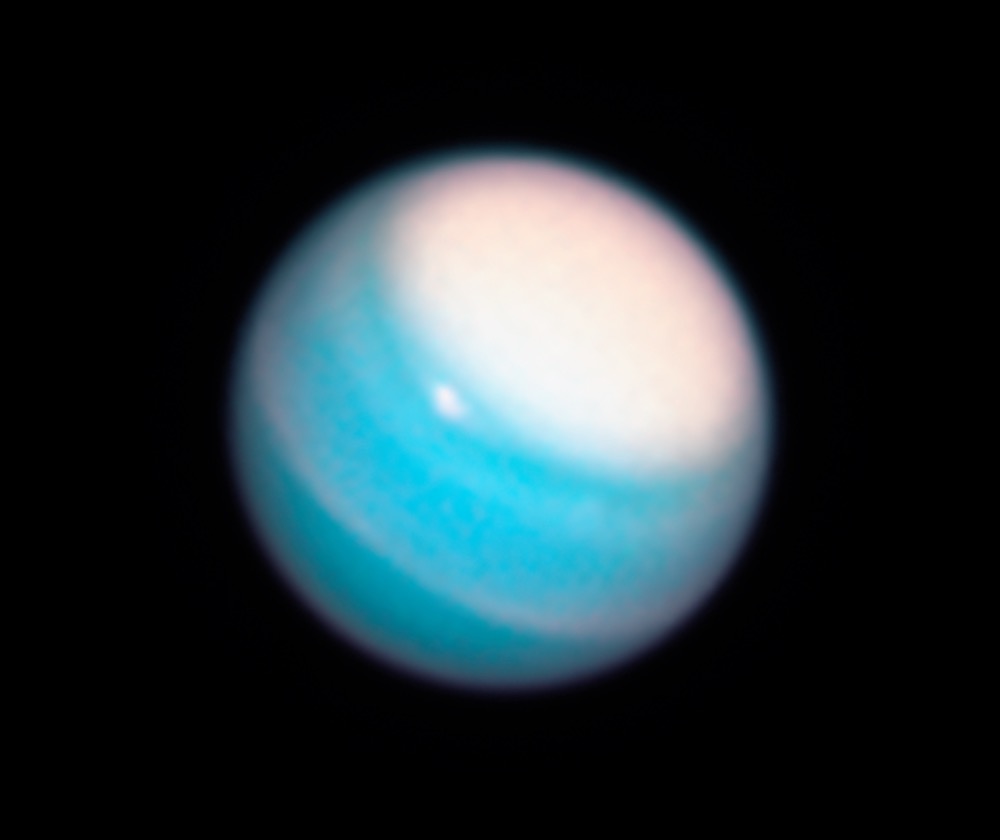
Hubble reveals dynamic atmospheres of Uranus, Neptune
February 7, 2024
Their seasons are much longer than on Earth, spanning decades rather than months Read more
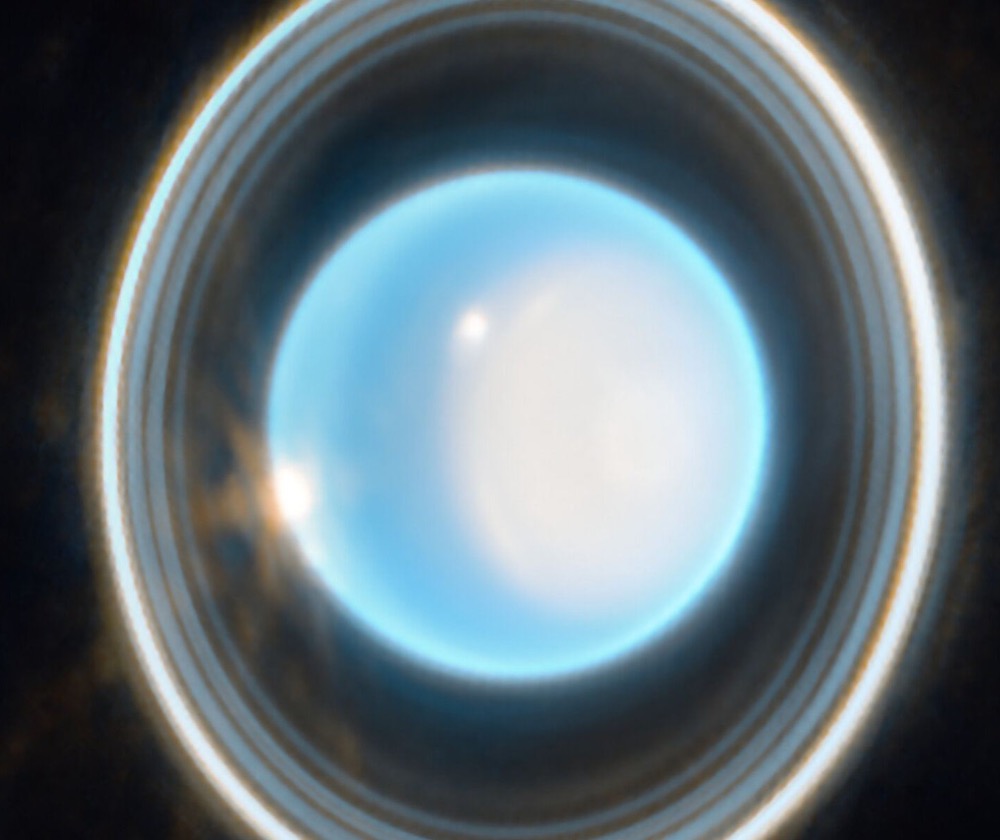
It’s time to go back to Uranus. What questions do scientists have about the ice giants?
January 23, 2024
Our knowledge of Uranus was quite limited until the advent of space exploration Read more
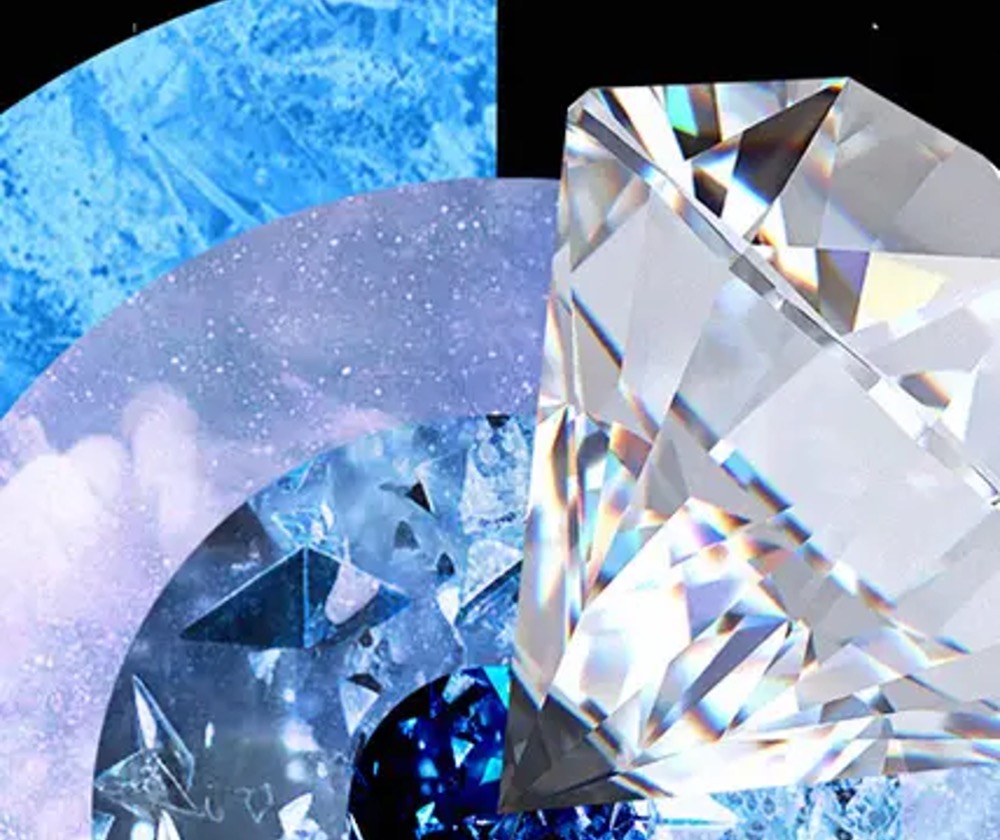
Could diamonds drive Neptune and Uranus’ magnetic fields?
January 12, 2024
Diamonds could form in the shallow interiors of planets like Uranus and travel downward Read more
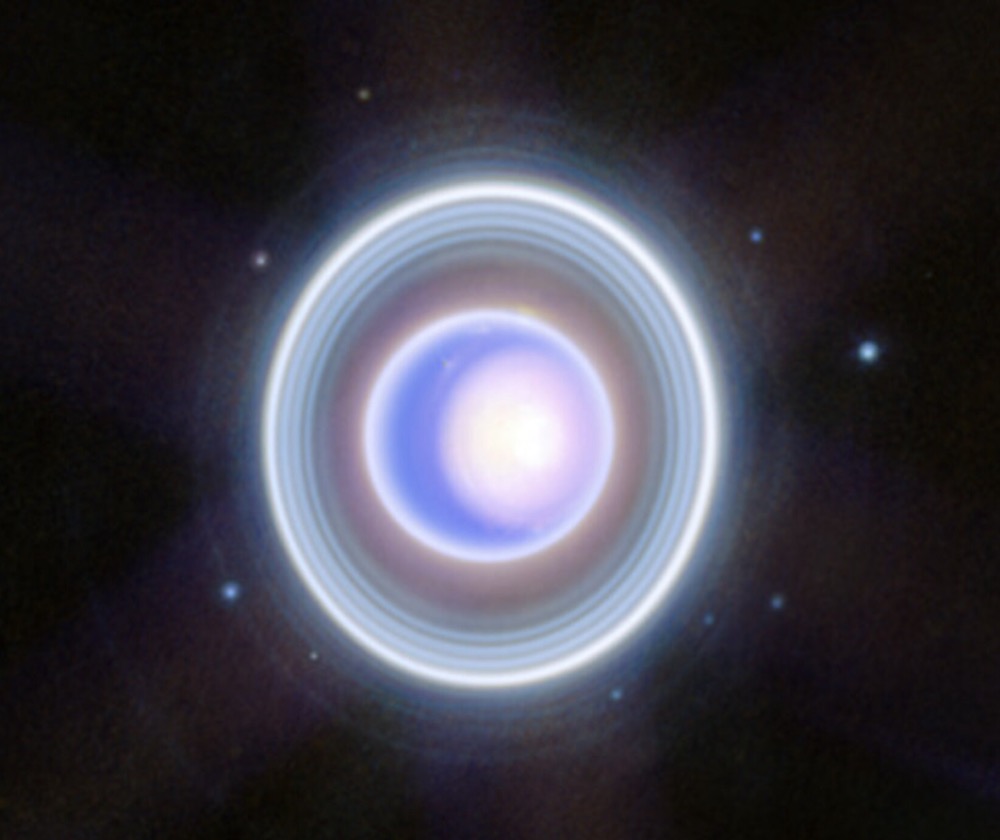
JWST rings in the holidays with the ringed planet Uranus
December 18, 2023
What it found is a dynamic world with rings, moons, storms and other atmospheric features Read more
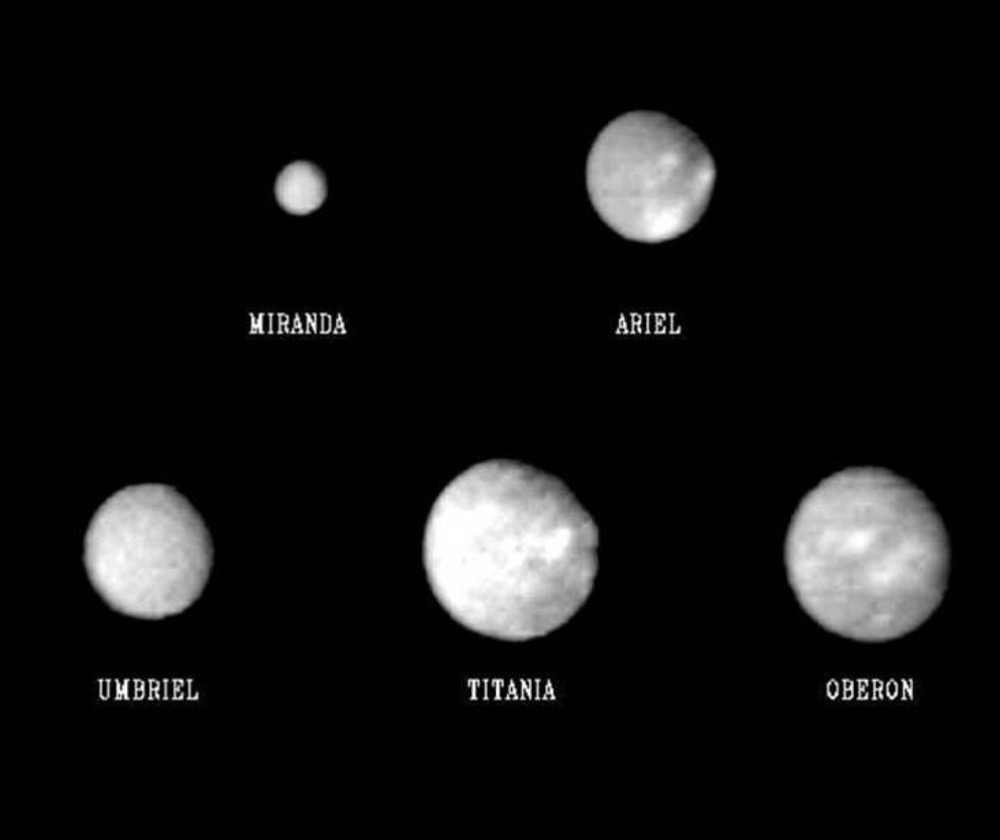
Potential formation of atmosphere on Uranus' moons unveiled by scientists
December 18, 2023
Sunlight in the spring may be strong enough to cause ice to begin vaporizing Read more
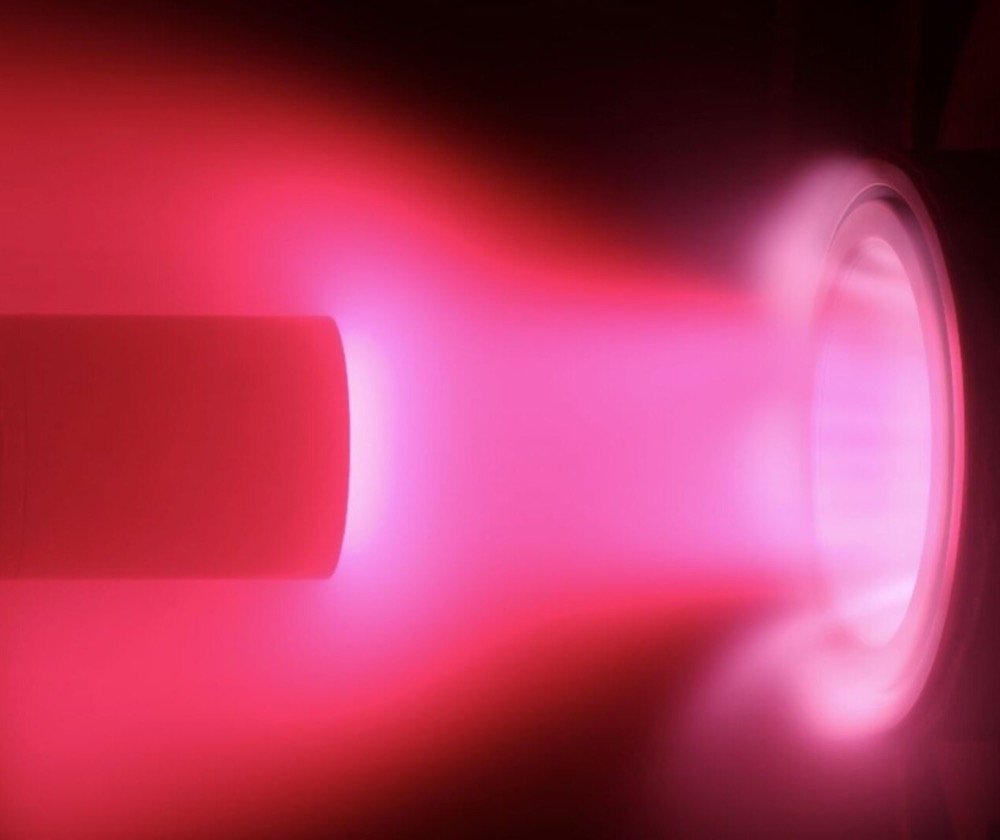
Wonder what it's like to fall into Uranus? These scientists do, too
November 22, 2023
Wind tunnels show what a probe descending into the atmosphere may have to contend with Read more
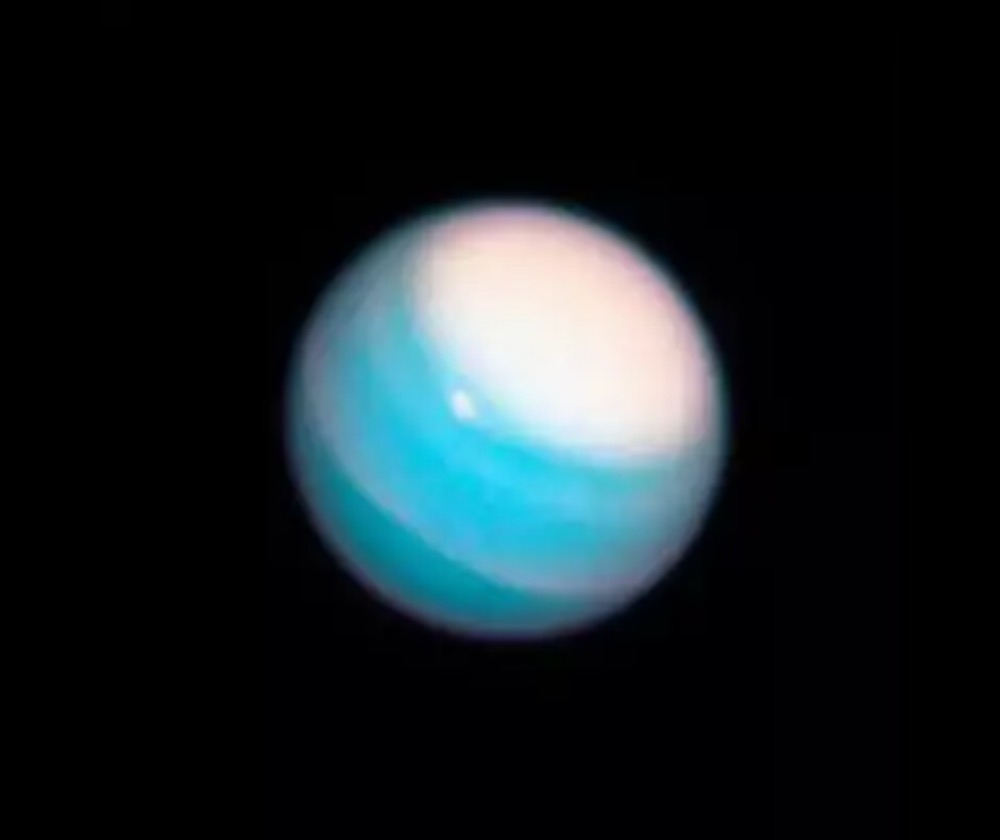
Why aren't there more close-up images of Uranus and Neptune?
November 6, 2023
Neither planet has ever had its own dedicated mission Read more
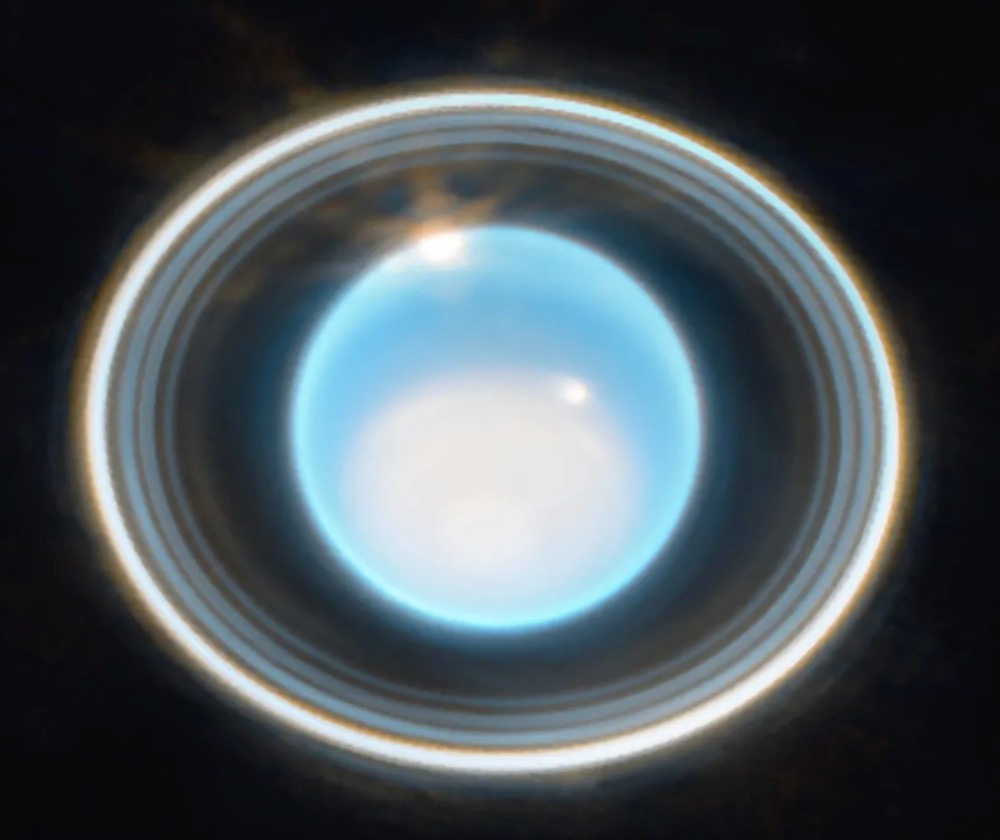
The rings of Uranus are being held back by its pesky moons
October 30, 2023
The largest of Uranus' 27 moons are able to keep the planet's stunted rings in check Read more
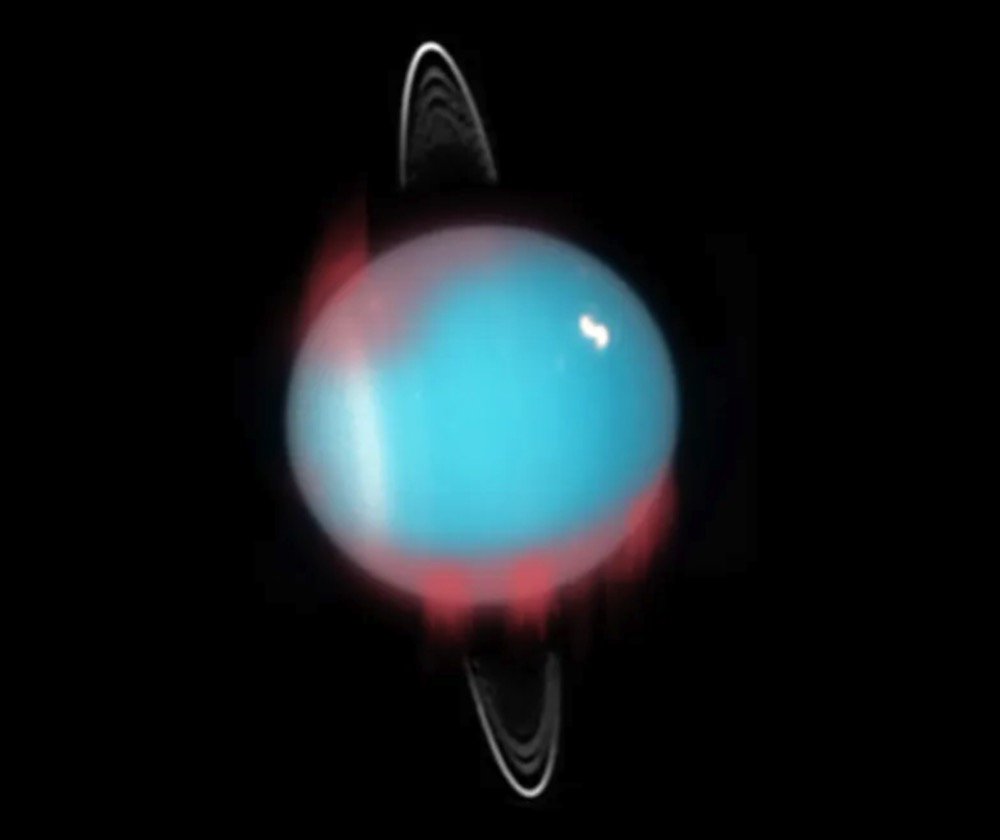
Infrared aurora on Uranus confirmed for the 1st time
October 27, 2023
The Keck II telescope in Hawaii is the first to see the infrared glow Read more
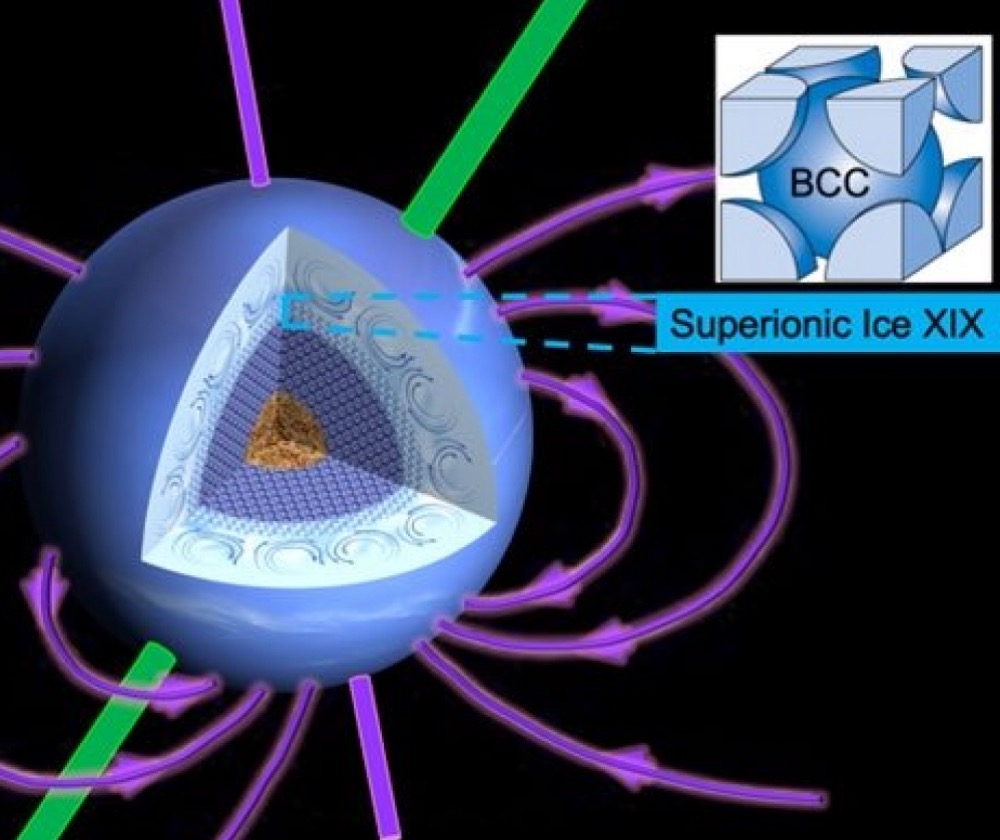
Study explains Neptune and Uranus' unusual magnetic fields
October 10, 2023
Ice XIX is a high-pressure form of ice that could develop in the deep interior of Uranus Read more
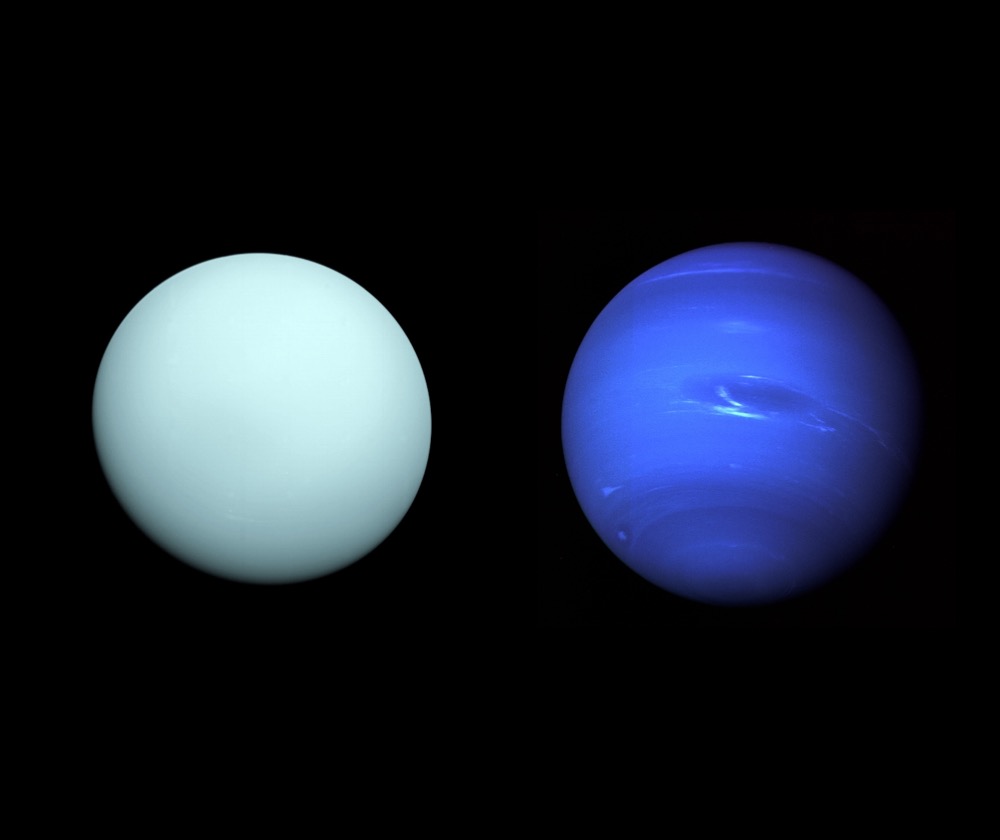
NASA asks for help studying Uranus and Neptune as it prepares to capture new images
August 18, 2023
The New Horizons spacecraft will take images of the ice giants from "behind" Read more
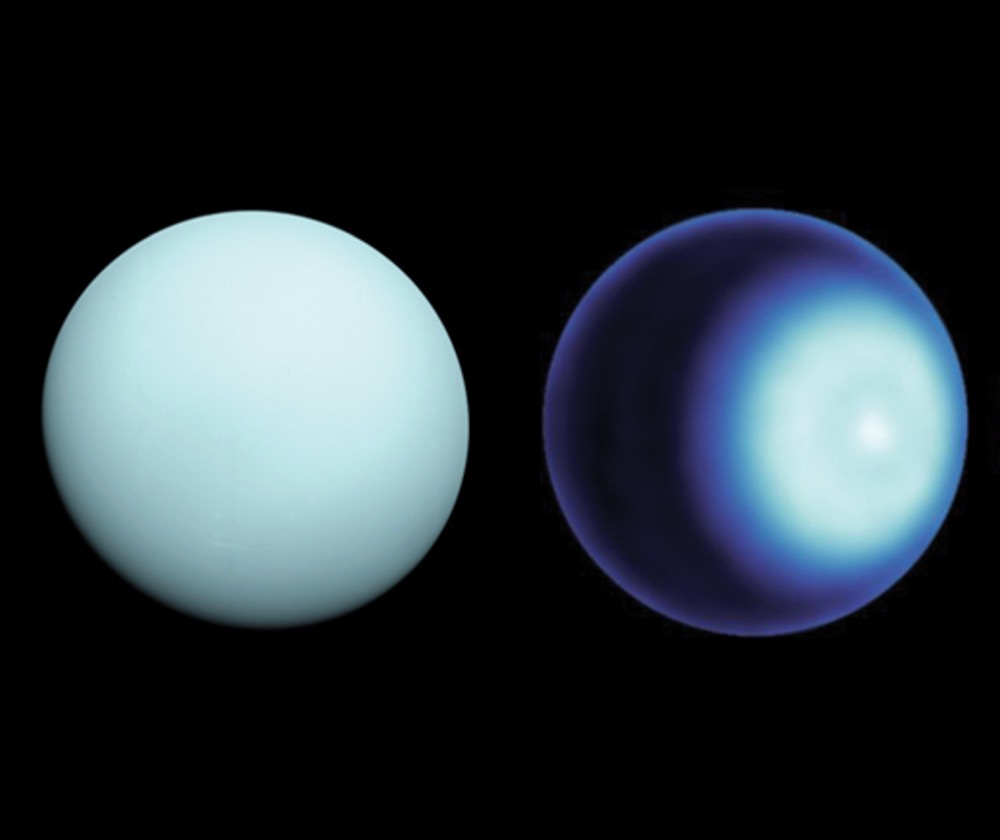
Uranus’s hidden polar cyclone, revealed
August 1, 2023
Microwave observations peer into the atmospheric dynamics of the oddball seventh planet Read more
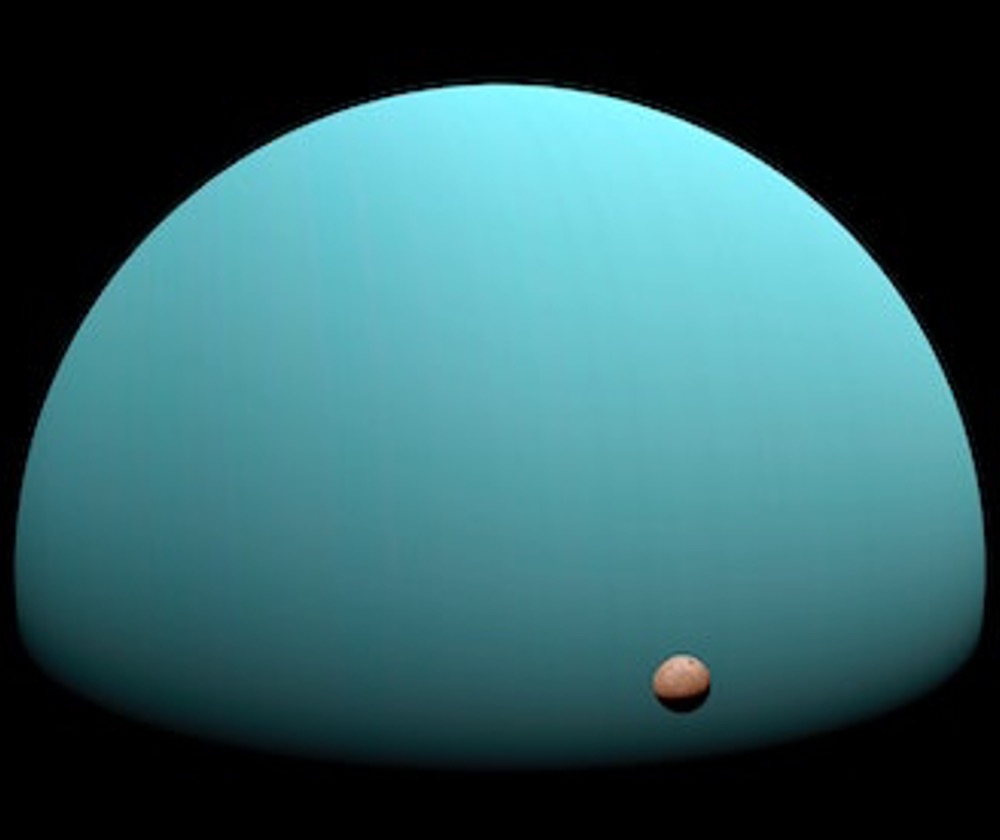
Probing Uranus could help NASA indirectly find Planet Nine
July 14, 2023
That’s not a terrible joke, just an actual research idea from a team of physicists Read more
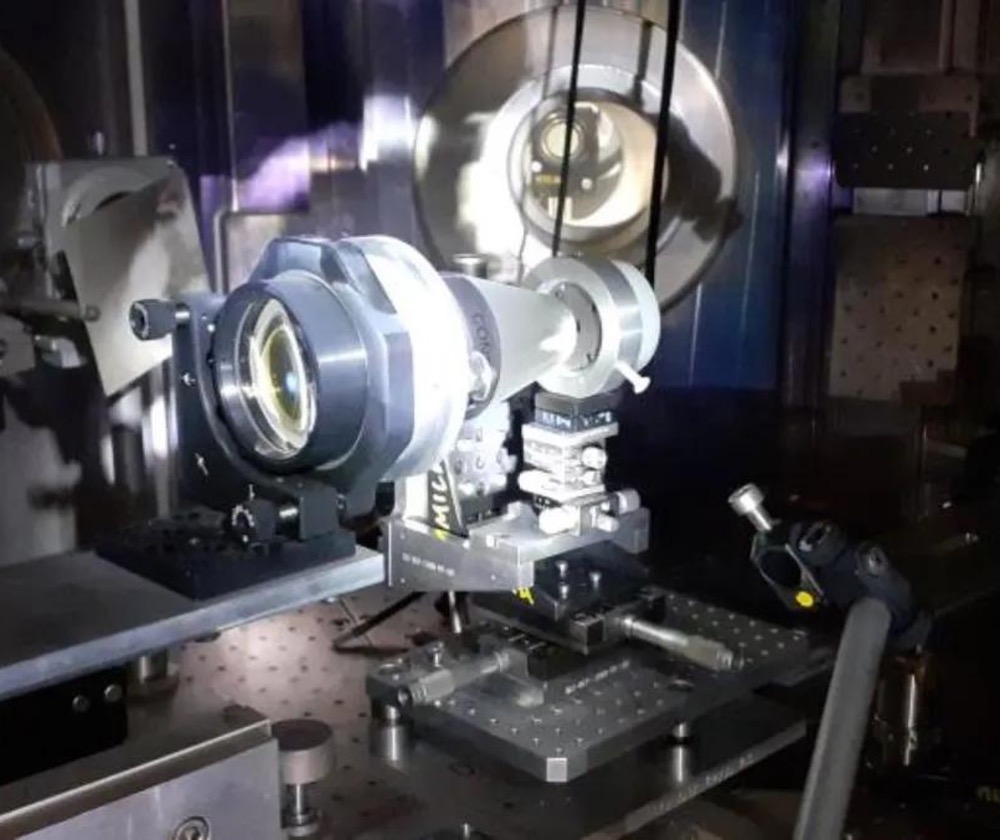
Superionic ammonia in the lab sheds light on magnetic fields of Uranus and Neptune
July 11, 2023
Conditions in their lab resemble those on the planets Read more
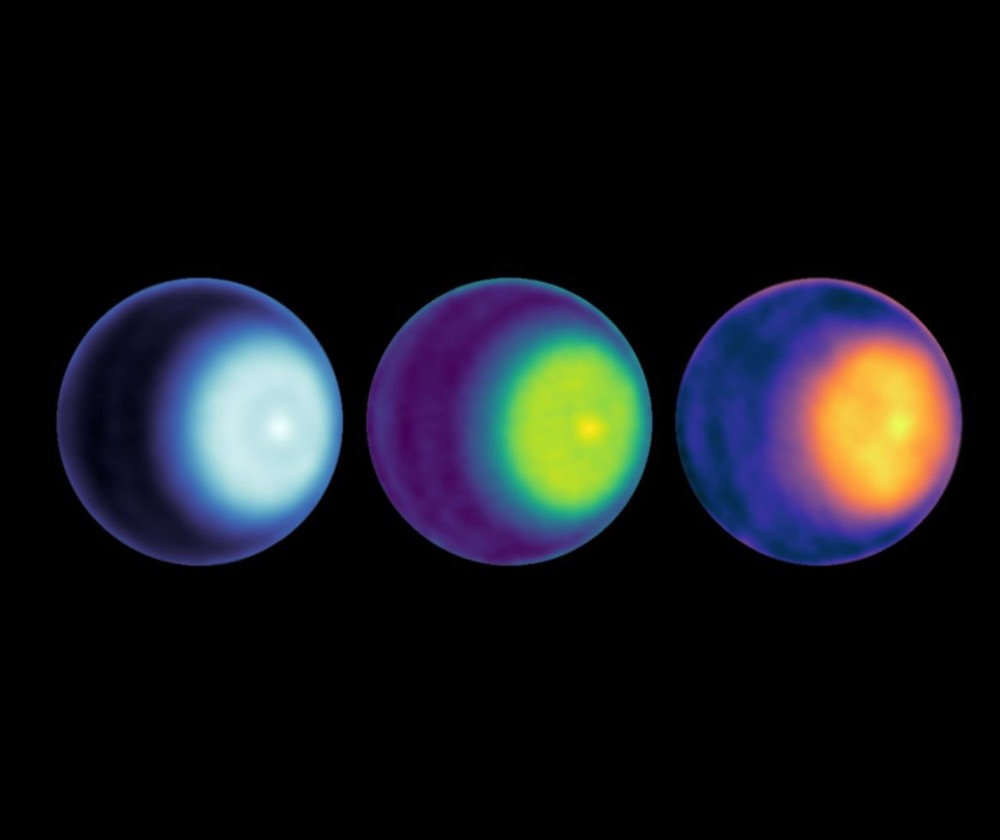
NASA scientists make first observation of a polar cyclone on Uranus
May 23, 2023
The findings confirm a broad truth about all planets with substantial atmospheres Read more
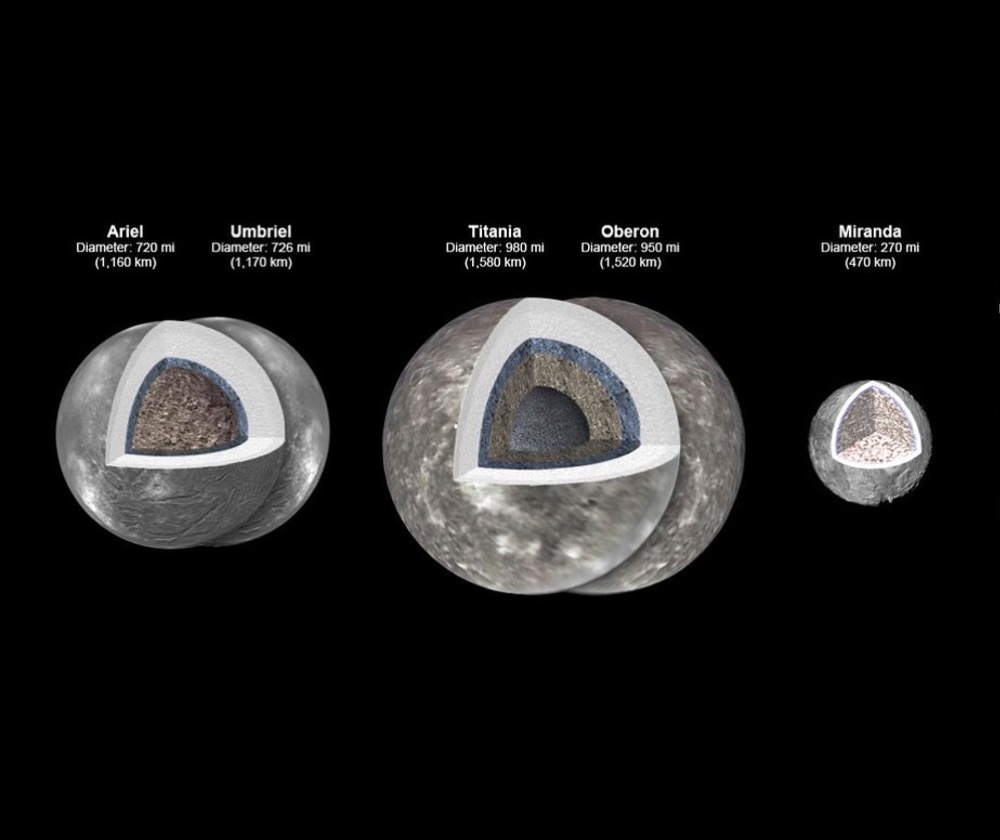
New study of Uranus’ large moons shows four may hold water
May 4, 2023
New modeling explores how oceans could exist in unlikely places in our solar system Read more
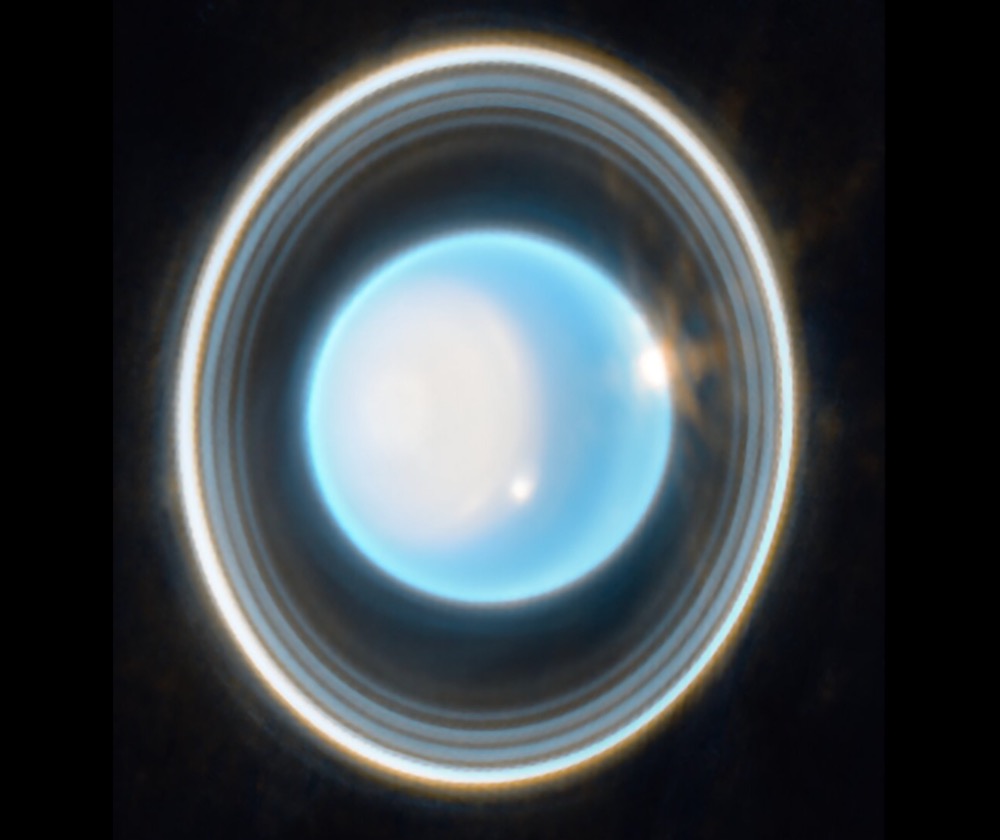
Rings around Uranus! JWST captures stunning image of ice giant (photo, video)
April 6, 2023
See Uranus' spectacular rings, bright moons and dynamic atmosphere Read more
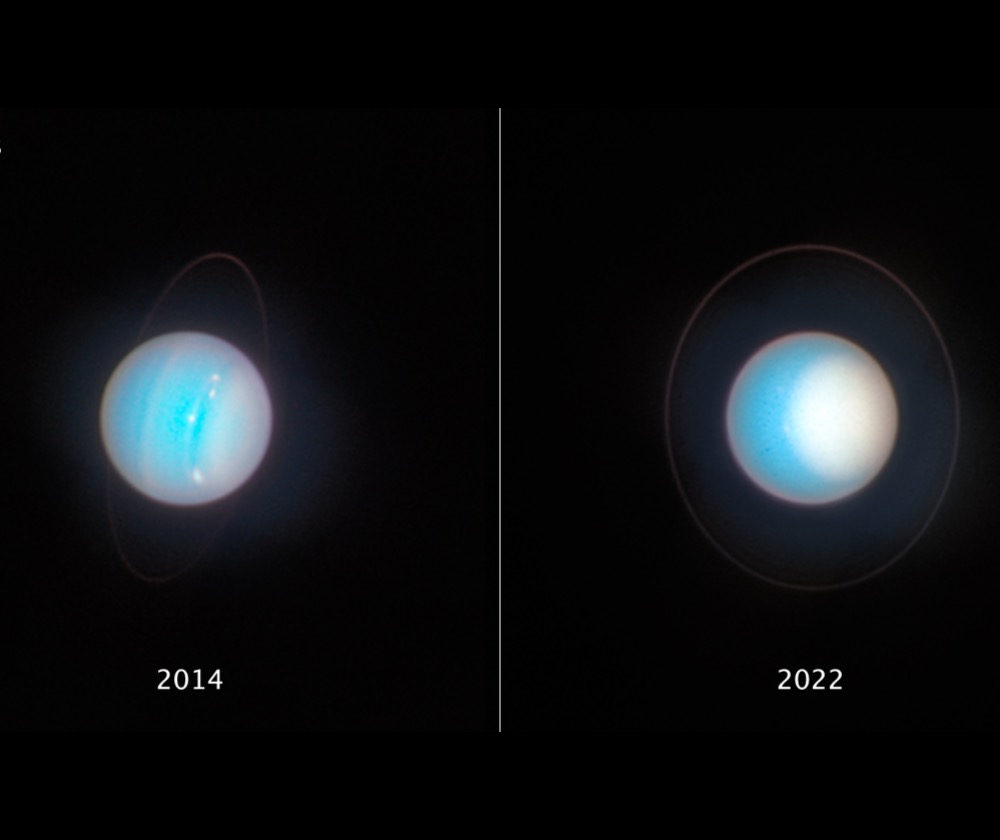
Hubble monitors changing weather and seasons at Jupiter and Uranus
March 23, 2023
Hubble's sensitivity keeps an eye on complex activities over time Read more
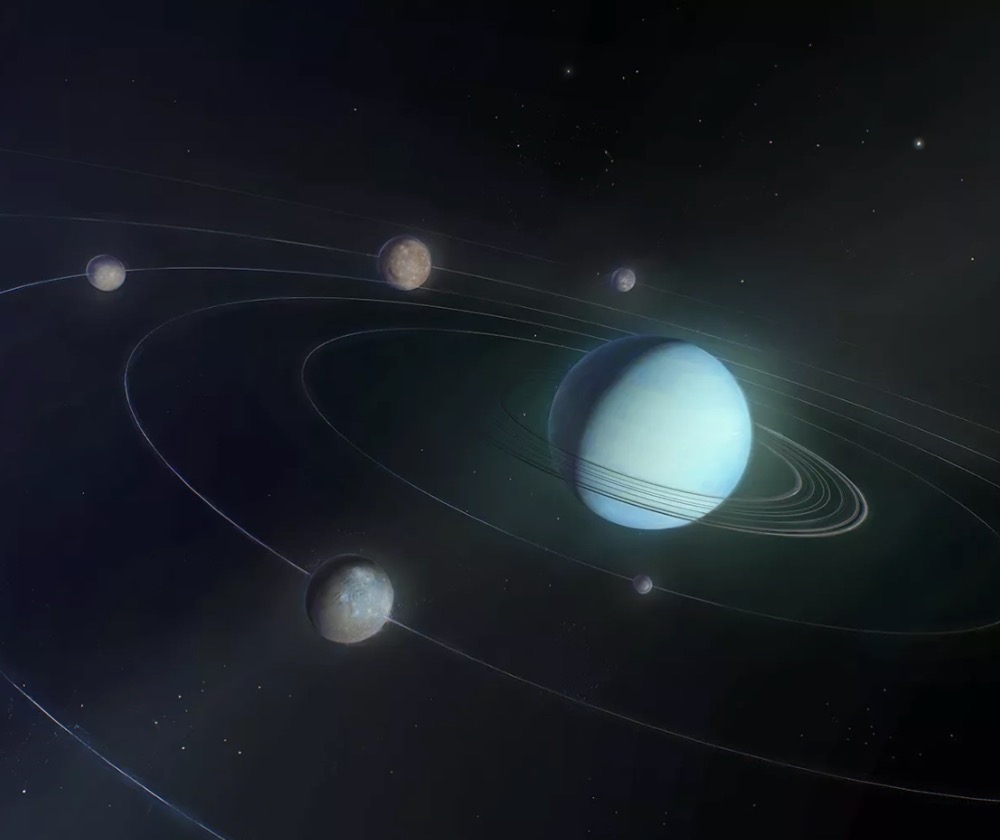
Two moons of Uranus may have active subsurface oceans
March 20, 2023
The Uranus system may be even more interesting than we thought Read more
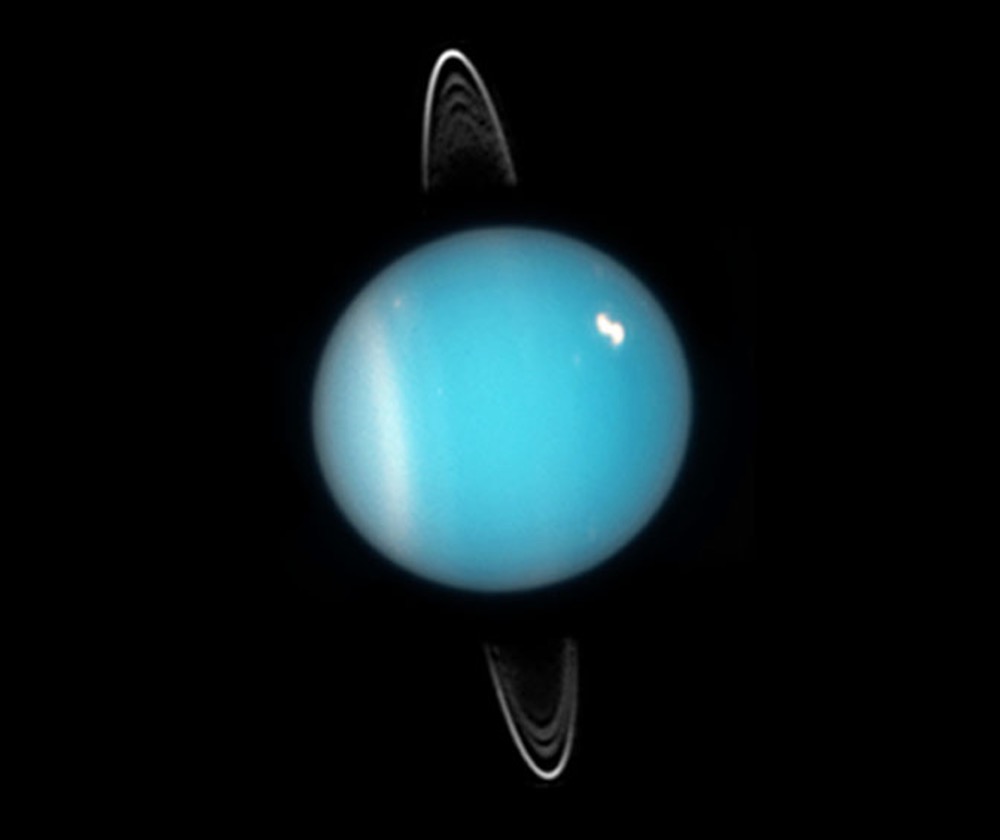
Do diamonds rain on the ice giants?
March 8, 2023
New research shows diamonds might condense out of Neptune’s mantle, but not Uranus’ Read more
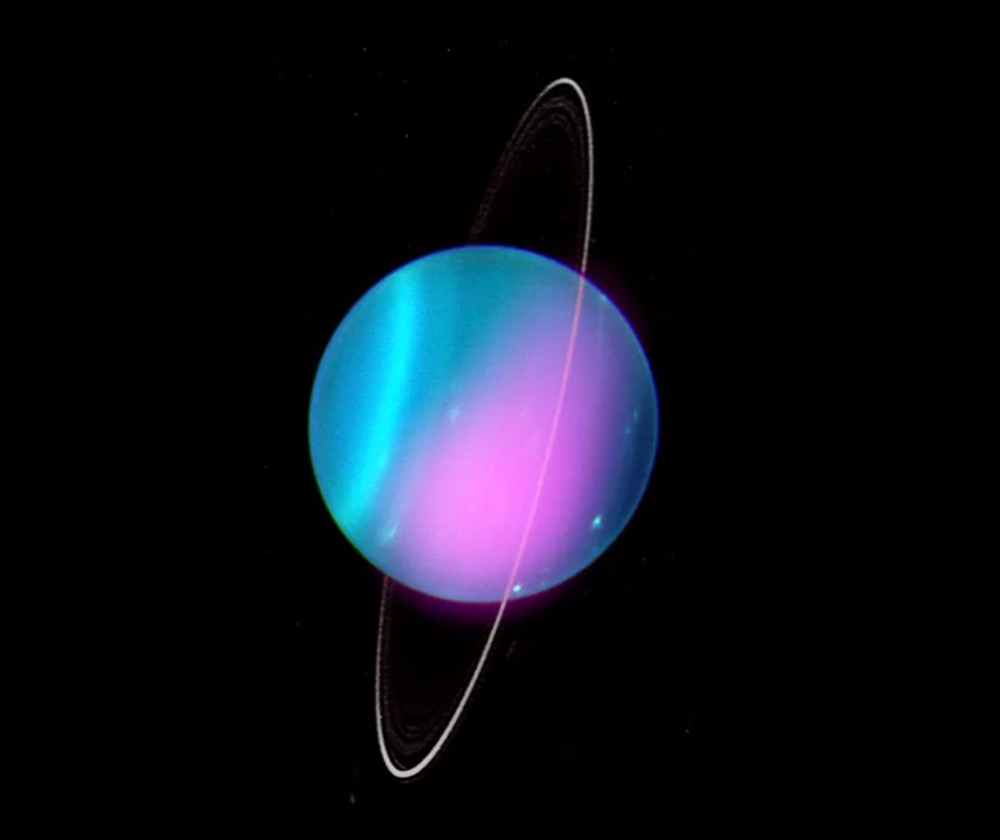
Uranus up close: What proposed NASA 'ice giant' mission could teach us
February 17, 2023
Uranus and Neptune remain largely mysterious Read more
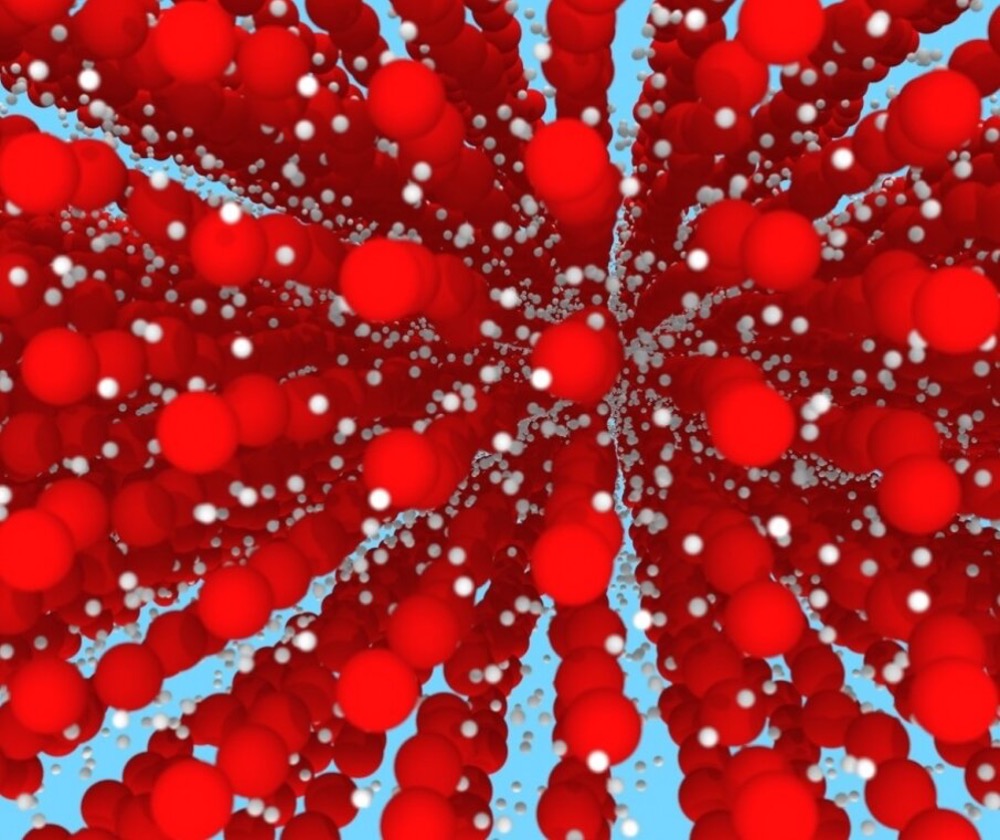
Superionic ice contributes to understanding of magnetic anomalies on Neptune and Uranus
January 23, 2023
More than 20 different phases of crystalline water are possible Read more
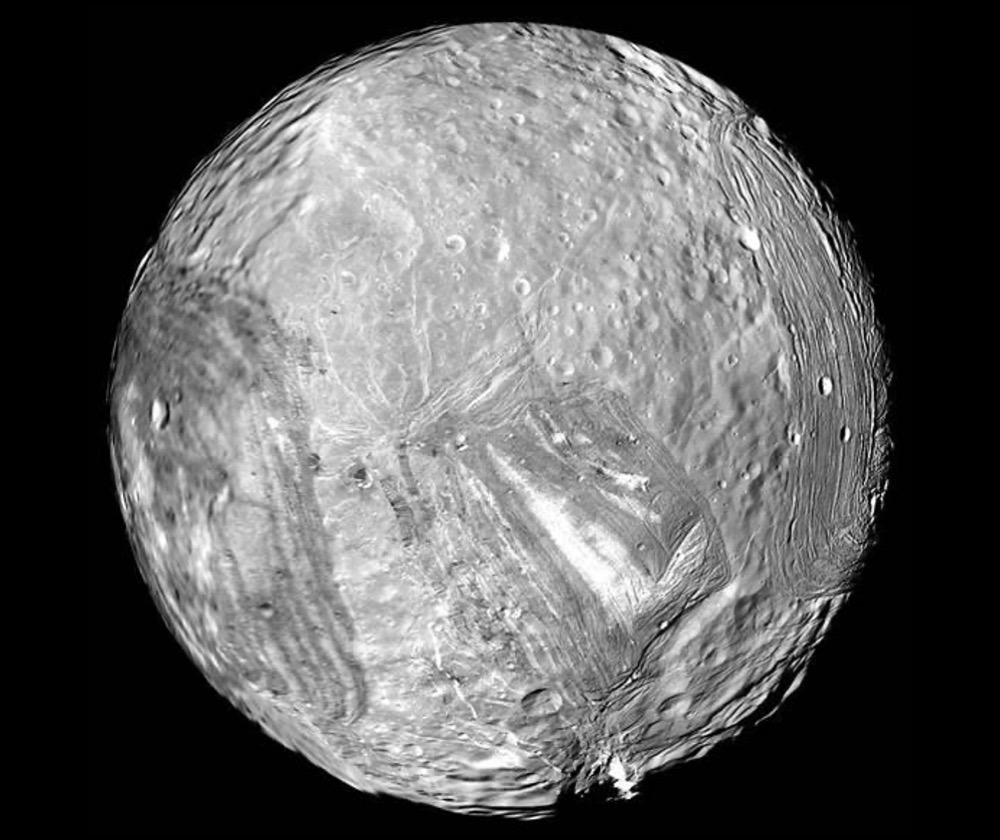
Scientists investigate potential regolith origin on Uranus’ moon, Miranda
December 22, 2022
A thick layer would trap heat, enhancing the longevity of a subsurface ocean Read more
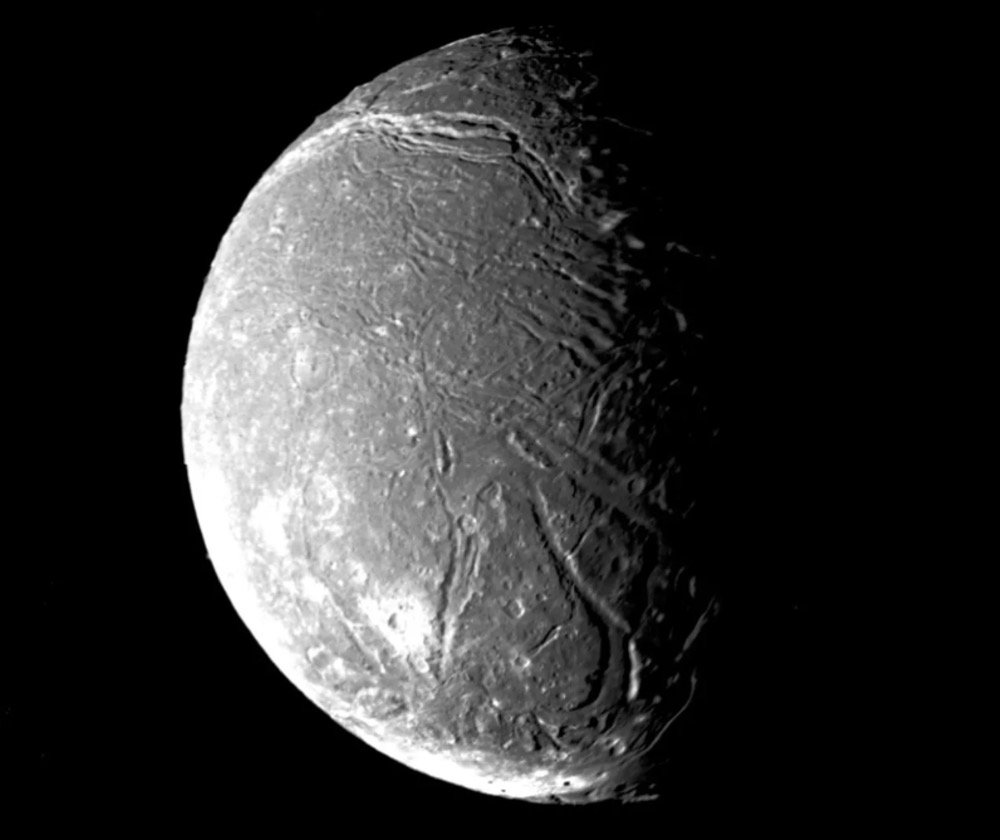
Uranus moons beckon to plans for a NASA orbiter mission to the sideways world
October 27, 2022
All four of the largest moons might have oceans buried below their icy crusts Read more
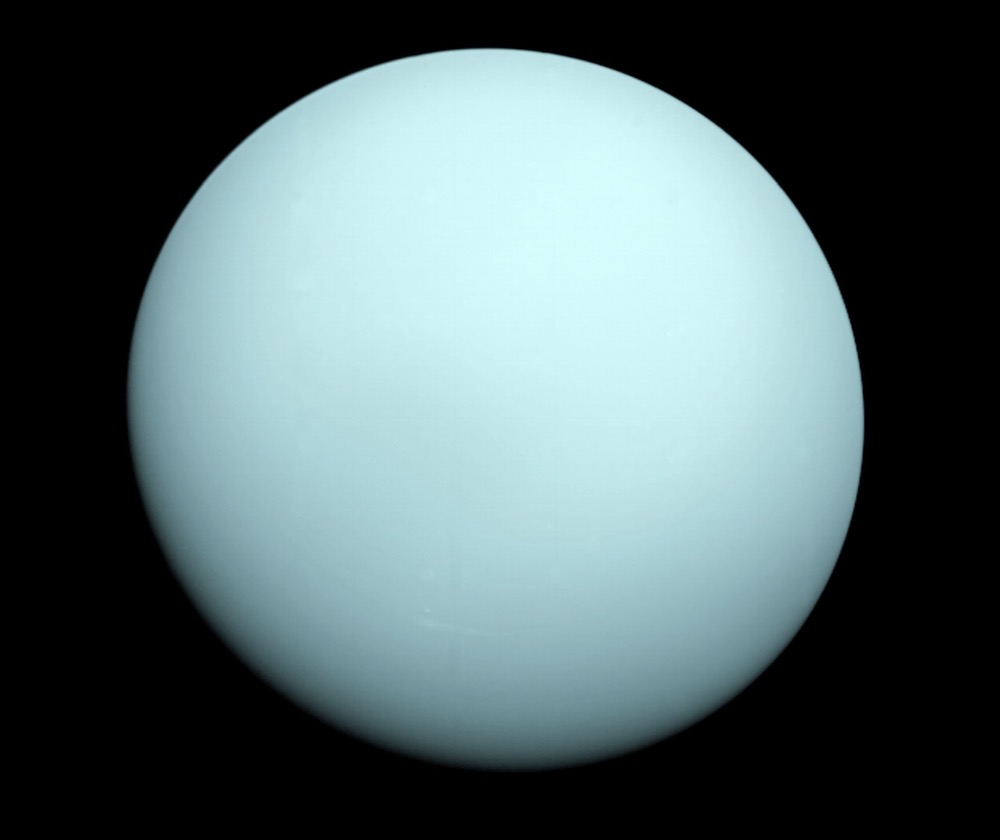
Seeking answers, planetary scientists plot a return to the nearest ice giant
October 20, 2022
If NASA launches in the early 2030s, it can reach the planet in the mid-2040s Read more
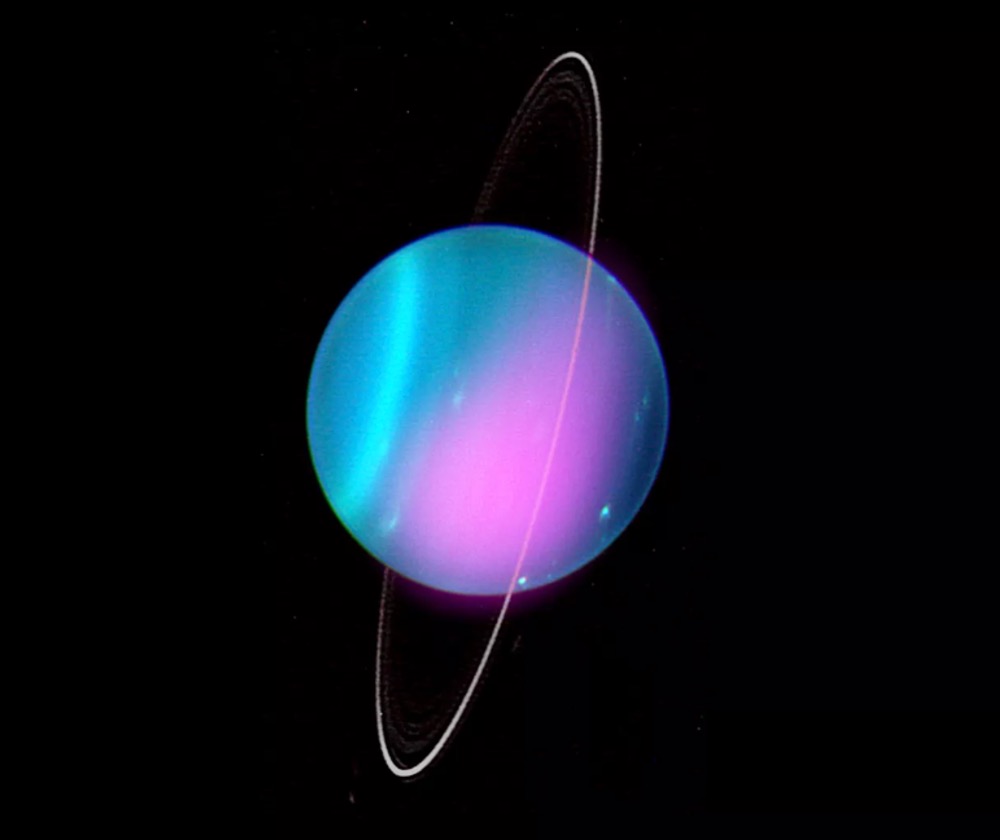
Uranus' weird tilt may be the work of a long-lost moon
October 6, 2022
New research suggests a much less violent cause: a satellite of Uranus that wandered away Read more
Fascinating Facts About Uranus
- If the sun were as tall as a typical front door, Earth would be the size of a nickel and Uranus would be about as big as a softball.
- From Uranus’ surface, the Sun appears about one-twentieth as large as it does from Earth and sunlight appears about 370 times dimmer.
- Uranus reaches the coldest temperature of any other planet even though it is not the farthest from the Sun.
- Many of Uranus’ moons are named after characters from the works of William Shakespeare and Alexander Pope.
- Uranus rotates on its side: it spins horizontally, and as a result of its sideways rotation, Uranus experiences around 20 years of night in the winter, 20 years of day in the summer and 42 years of night and day in the spring and fall.
- Uranus is an ice giant. Most (80 percent or more) of the planet's mass is made up of a hot dense fluid of "icy" materials – water (H2O), methane (CH4). and ammonia (NH3) – above a small rocky core.
Missions
Voyager 2 (1977)
Mission to study the outer solar system



